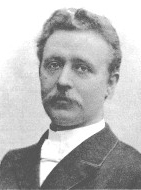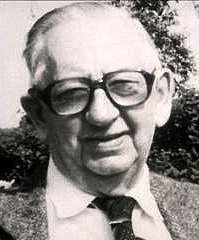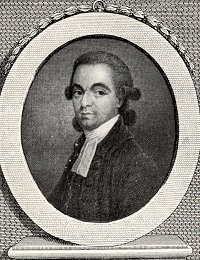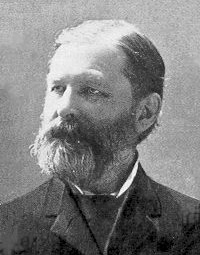The Story Behind the Hymn: “How Great Thou Art”
Words by Carl Gustaf Boberg (1859-1940), Written in 1885What a wonderful hymn this is, I hope that it encourages your walk with the Lord if you are a Christian. The lyrics of the song are such a lovely reminder that we can focus on how great our Savior is. However, if you aren't a Christian, I hope that you'll be encouraged to start your walk with the Lord and that He may guide your steps and help you in your time of need.
I will be including the lyrics at the bottom of this message. Please look at the link below for the reference of where this information may be found on the internet. Thanks. :)
http://www.celebratingholidays.com/?page_id=12507
Carl Boberg was born in Sweden as the son of a shipyard carpenter. After spending some years as a sailor, Carl had a conversion experience at the age of 19. He decided to attend a Bible school in Sweden and then accepted a pastorate in his hometown. In 1890, he began serving as the editor of an evangelistic magazine. He soon became the owner of the magazine, and he continued as its editor until 1916. According to hymnologist J. Irving Erickson, “Under [Carl’s] leadership, the periodical became an increasingly important arm of the evangelical movement.” For almost 20 years, Carl also served as a member of the Swedish Parliament. He was a popular speaker and a gifted writer. He published several collections of poetry as well as many hymns which are still sung in Sweden. Only a handful of Carl’s hymns have been translated into English – the most popular being “How Great Thou Art.” Carl wrote this hymn when he was only 26 years old. He had been walking through a spectacular thunderstorm in 1885 when he was inspired with the opening words of his poem “O Store Gud” (“O Great God”). He wrote 9 stanzas based on Psalm 145:3, “Great is the Lord, and most worthy of praise.” A few years later, while visiting a church in Sweden, Carl was surprised to hear his poem being sung to an old Swedish folk melody.
Tune “O Store Gud,” a Swedish hymn adapted and translated by Stuart Wesley Keen Hine (1899-1989), Published in 1949
Stuart Hine was born in London, England. He became a Christian at the age of 14 and later became a missionary to Eastern Europe. Stuart first heard the hymn “How Great You Are” in 1933 in Ukraine where it was sung in Russian. The Swedish original had been translated into both German (1907) and Russian (1912). Stuart and his wife began singing the hymn in Russian at evangelistic meetings, but it was not until he was caught in a storm in the Carpathian Mountains that he began a “free translation” of the hymn into English. He translated nine of the verses into two and later added a third and fourth verse of his own. Hine published his version in 1949 in Grace and Peace, an evangelistic publication that circulated in at least 15 countries. Furthermore, British missionaries helped to spread the hymn to both Africa and Asia. The popularity of the hymn grew in the U.S. (and renewed interest in the hymn in Europe) through its use in the Billy Graham Crusades. “How Great Thou Art” continues to rank as a favorite hymn across the globe.
Lyrics to the Hymn
O Lord my God, When I in awesome wonder,
Consider all the worlds Thy Hands have made;
I see the stars, I hear the rolling thunder,
Thy power throughout the universe displayed.
Refrain:
Then sings my soul, My Saviour God, to Thee,
How great Thou art, How great Thou art.
Then sings my soul, My Saviour God, to Thee,
How great Thou art, How great Thou art!
Refrain
When through the woods, and forest glades I wander,
And hear the birds sing sweetly in the trees.
When I look down, from lofty mountain grandeur
And see the brook, and feel the gentle breeze.
Refrain
And when I think, that God, His Son not sparing;
Sent Him to die, I scarce can take it in;
That on the Cross, my burden gladly bearing,
He bled and died to take away my sin.
Refrain
When Christ shall come, with shout of acclamation,
And take me home, what joy shall fill my heart.
Then I shall bow, in humble adoration,
And then proclaim: "My God, how great Thou art!"
Refrain
Consider all the worlds Thy Hands have made;
I see the stars, I hear the rolling thunder,
Thy power throughout the universe displayed.
Refrain:
Then sings my soul, My Saviour God, to Thee,
How great Thou art, How great Thou art.
Then sings my soul, My Saviour God, to Thee,
How great Thou art, How great Thou art!
Refrain
When through the woods, and forest glades I wander,
And hear the birds sing sweetly in the trees.
When I look down, from lofty mountain grandeur
And see the brook, and feel the gentle breeze.
Refrain
And when I think, that God, His Son not sparing;
Sent Him to die, I scarce can take it in;
That on the Cross, my burden gladly bearing,
He bled and died to take away my sin.
Refrain
When Christ shall come, with shout of acclamation,
And take me home, what joy shall fill my heart.
Then I shall bow, in humble adoration,
And then proclaim: "My God, how great Thou art!"
Refrain




